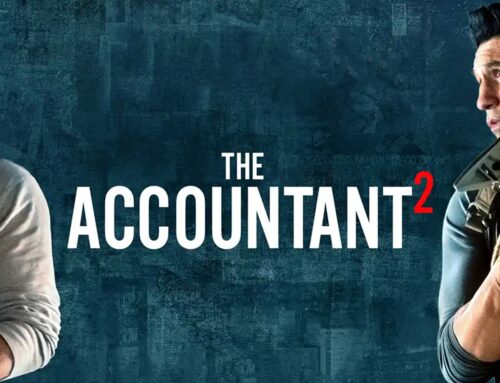A pair of movies now playing at a cineplex near you wear their agendas on their sleeves: each re-tells a true story, skewers its villains, and brings its audience right up close to the imagined scenes of the action whose outcome we already know.
Director/co-writer Oliver Stone’s SNOWDEN comes with a careful central performance by Joseph Gordon-Levitt as Edward Snowden, computer wiz and infrastructure analyst for the National Security Agency who discovers a top secret surveillance program employed by the US government to spy on, well, everyone.
The rest is history: Snowden blows the whistle on the U.S. government’s secret telephone and internet surveillance of its citizens, resulting in his widespread condemnation as a traitor and criminal, and turning him into a fugitive. All of this is extraordinarily documented in the 2014 documentary CITIZENFOUR which recounts Snowden’s clandestine escape to a Hong Kong hotel room where on June 6, 2013 he meets filmmaker Laura Poitras and investigative journalists Glenn Greenwald and The Guardian’s Ewen MacAskill to whom he releases classified information– as we watch! I couldn’t believe what I was seeing. The compelling immediacy of the documentary can’t be topped: it isn’t verisimilitude– it’s the real thing.
Stone’s film feels anticlimactic in comparison. What’s left for him is to conjure Snowden’s inner life and fill in the blanks with his very able cast. We learn that Edward Snowden originally aspired to be in the military special forces, but a physical injury forced him to seek other ways of “serving his country.” Snowden is envisioned here as a straight arrow with a penchant for Ayn Rand, Thoreau, and Joseph Campbell, but we watch his heroic inner liberal grow with the nurturing of a girlfriend annoyingly played by Shailene Woodley.
The film imagines Edward’s growing unease with the business he’s in, and his increasingly tense relationships with higher ups at the NSA. Rhys Ifans plays his looming villain of a boss on a giant screen. Scott Eastwood’s character seems overly suspicious of Snowden from the get go. Nicolas Cage in one of his actory, cornball performances plays a bitter old hacker shut away in a lab to scowl. Melissa Leo’s hair seems inordinately greasy– she plays documentary filmmaker and I guess the condition of her coif demonstrates she’s a woman who’s really serious about her work “behind” the camera. Zachary Quinto, Tom Wilkinson and Joely Richardson round out this able cast. Stone is dealing in broad strokes with a complex story that might have benefited from a more refined touch; his heavy hand is felt everywhere– and I left feeling, well, handled.
DEEP WATER HORIZON vividly directed by Peter Berg is equally two-dimensional, but bothered me less, because it fully embraces its narrower focus as an action/adventure tale, reductive as that is, about the massive oil spill and worst environmental disaster in U.S. history. It happened in 2010 when, under the auspices of the BP oil company, the Deepwater Horizon oil rig exploded in catastrophic failure off the coast of Mexico.
The film keeps it simple, with no pretensions to anyone’s inner emotional life. All we know about the hero of the film, chief electrical advisor Mike Williams played by Mark Wahlberg, is that he’s a stand up guy, brave as they come, knows his job inside out, and has great sex with his wife (Kate Hudson). He and his boss Jimmy Harrell (Kurt Russell) catch on quickly to anyone around them playing fast and loose with safety or the facts. But it wouldn’t take much to see that BP honcho–John Malkovich’s character snarling through his teeth and a Louisiana drawl– is the kind of guy you could trust about as far as you could throw an oil rig.
Kurt Russell as the rig’s captain is tough as nails and caught between a rock and the wimpy number- crunching execs at BP, but at the last minute caves to the pressure– and so does the drill. Who lives? Who dies? That’s what we need to find out, that– and did the bad guys pay?
Berg’s direction is almost poetic as he orchestrates the percolating problem at the ocean floor, tiny bubbles rising from the crust, a crack mirroring the rising tension beneath the facade of congeniality up on the surface. Perhaps there are one too many ominous shots of pipe-like things exploding (i.e. a straw in a coke can foreshadowing the oil to come.)
But the underwater images, fiery explosions, gradually spreading chaos among the crew, a frantic grease- covered seabird flailing to its death… all are coherently rendered so we can follow the action and know what it might have felt like to be there. There’s some value bringing that horror concretely home; it leaves us wondering what other tiny bubbles we should be on the lookout for now, as greed, speed, and short term solutions remain the order of the day.






[…] “Stone is dealing in broad strokes with a complex story that might have benefited from a more refined touch; his heavy hand is felt everywhere– and I left feeling, well, handled.” – Joyce Kulhawik, Joyce’s Choices […]
[…] “Berg’s direction is almost poetic as he orchestrates the percolating problem at the ocean floor, tiny bubbles rising from the crust, a crack mirroring the rising tension beneath the facade of congeniality up on the surface.” – Joyce Kulhawik, Joyce’s Choices […]